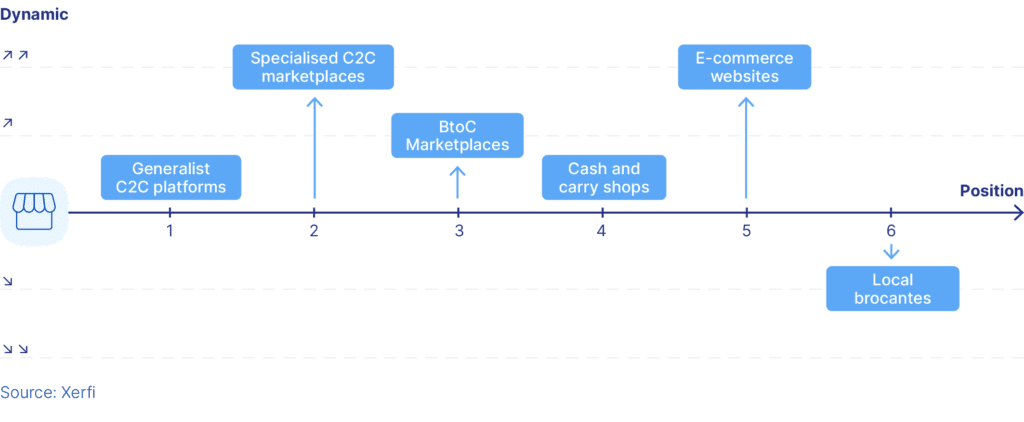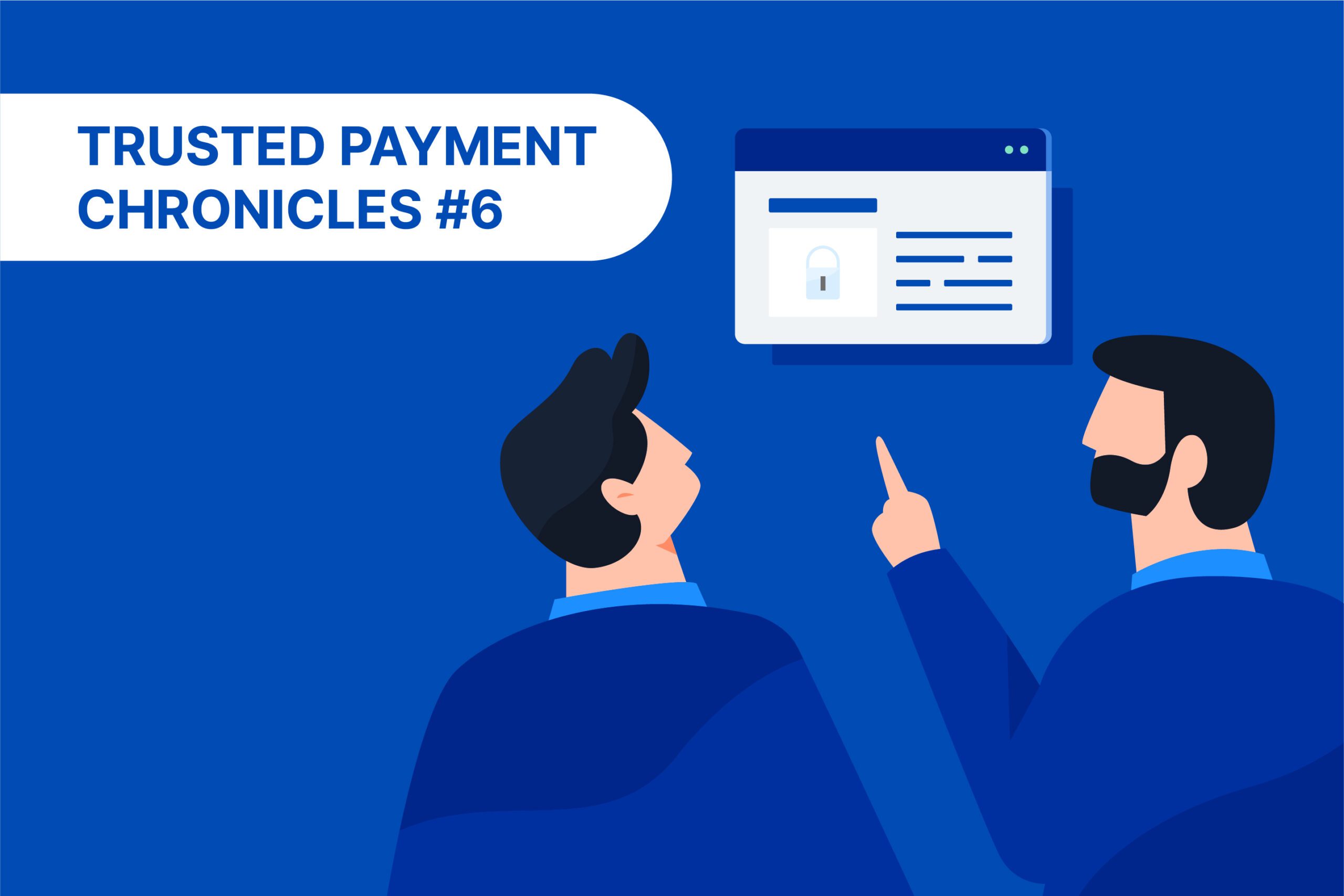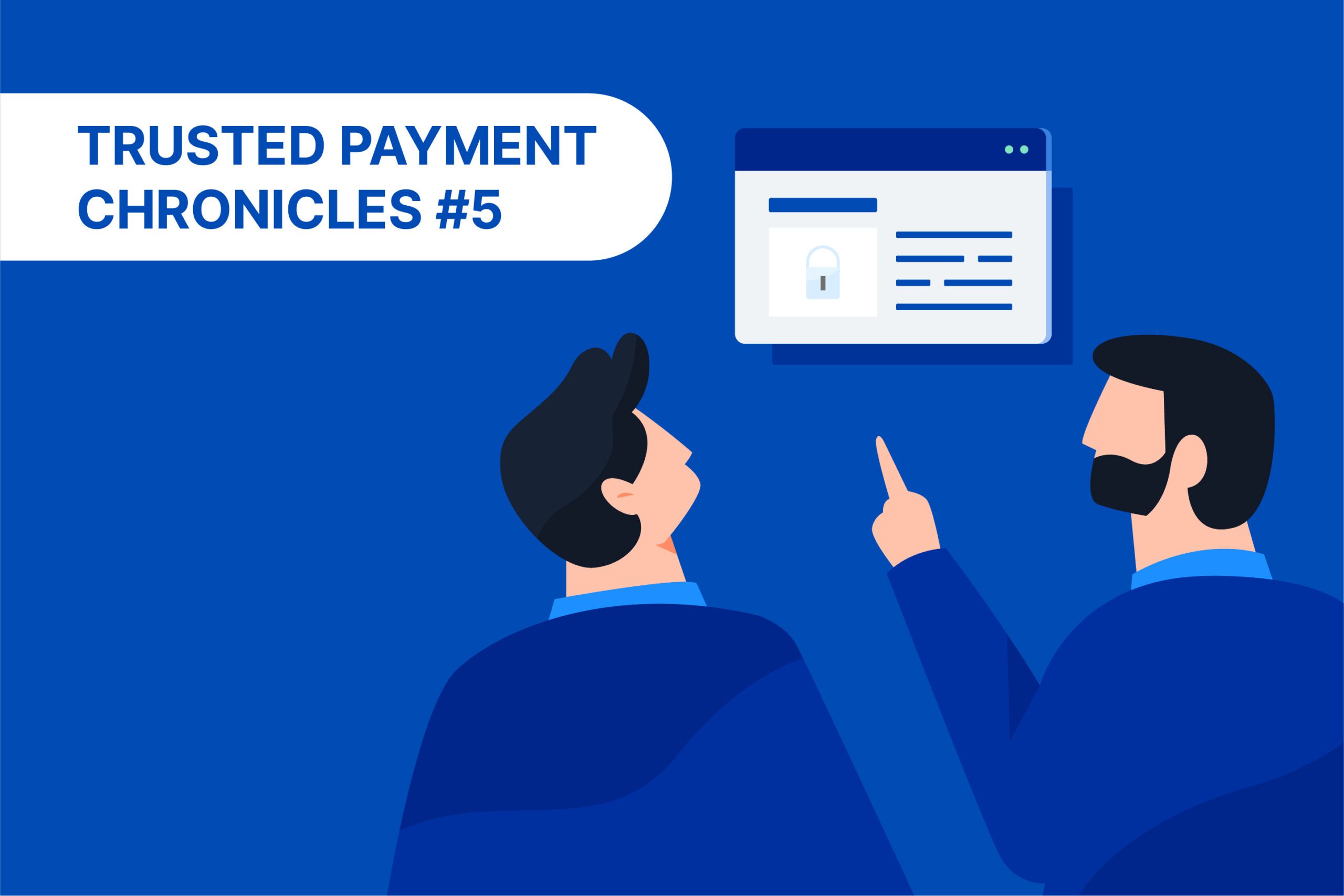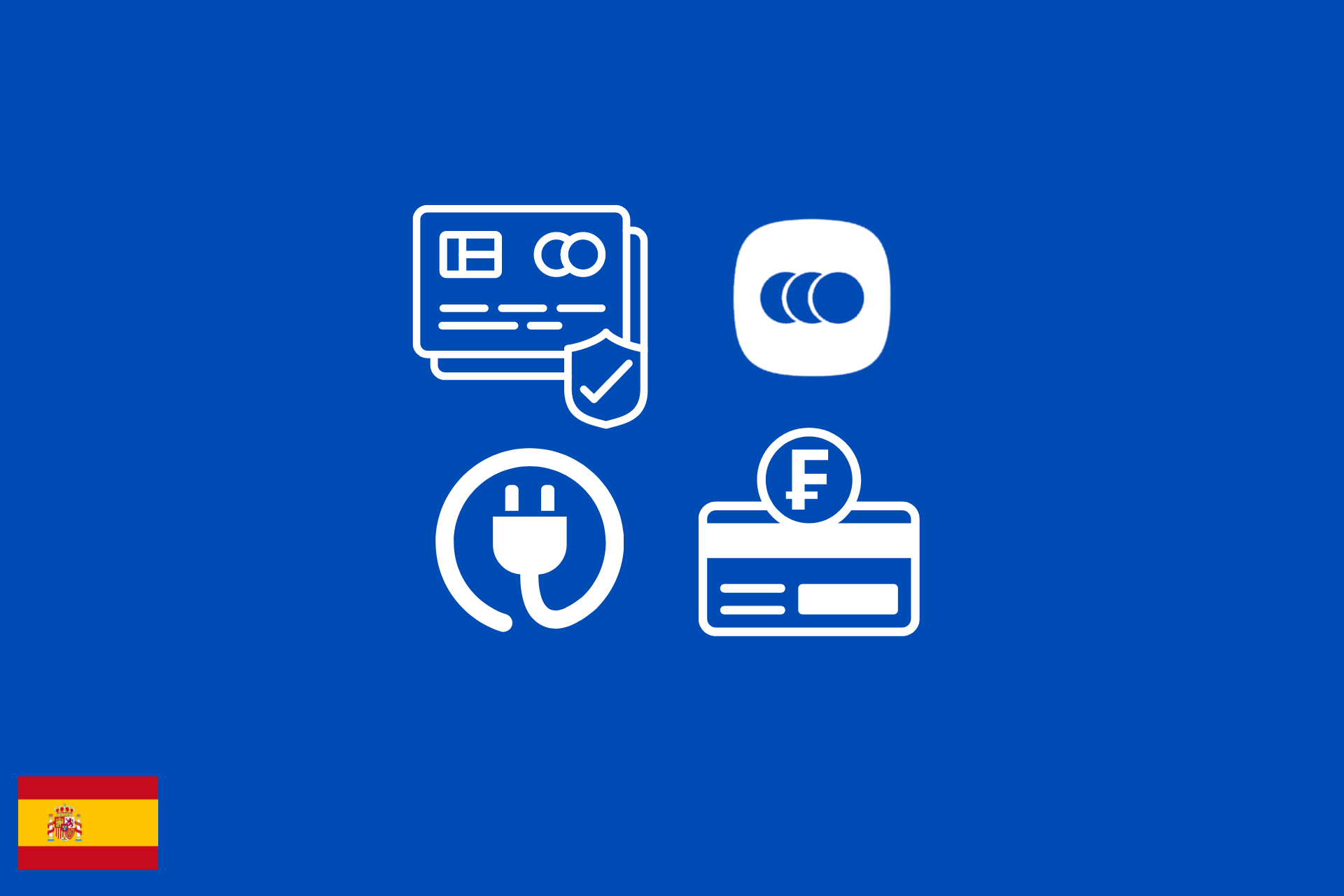Retailer: Is it still advantageous to enter the second-hand market? Article
February 12, 2024

The content you will find within this article:
The second-hand market has many advantages
The second-hand market is dynamic
Demand for second-hand products continues to rise: 46% of respondents in the Global Consumer Survey have purchased at least once on the second-hand market in the past 12 months.
It is interesting to note the increasing number of online transactions between individuals. The number of transactions made online has now far surpassed the number of transactions made by word of mouth. In addition, the trend is towards an increase in the market share of specialized platforms. We are facing a verticalized market and there is a real market opportunity for retailers.
Ranking of the top C2C transactional channels

The market is diversifying, driven by consumer expectations (declining purchasing power and environmental awareness in particular). This is a great opportunity for retailers, who are already largely digitized and have many tools to launch themselves quickly and in good conditions on the second-hand market.
Selling second-hand products boosts BtoC in-store and online traffic
Retailers are currently testing a wide variety of business models and user journeys around the world. Some of them make it possible to attract and retain a new category of consumers by mixing the purchase of new and used products.
Attracting traffic to physical stores is entirely possible thanks to second-hand products, especially by offering dedicated departments or, better yet, value-added services. Some networks have qualified employees who can repackage products before putting them back into the sales channel. Others allow individuals to purchase a spare part to repair their products themselves.
This strategy increases the drive-to-store since the transaction is carried out at the brand's point of sale. Most people who find a good deal on a second-hand product are inclined to buy a new product once they get there, taking advantage of the improved purchasing power.
The simplest trick to implement, and the most impactful for profitability, is to include the sale of second-hand products within the e-commerce site. You're already getting a lot of traffic to your site, so why not take advantage of it?
In any case, combining the sale of second-hand products with the sale of new products, whether in-store or online, is a great way to regain control of the brand's second-hand market. In addition, it is an opportunity to better control the brand image and avoid its degradation, as well as to recover the revenue generated on the second-hand market, which was previously captured by specialized second-hand platforms such as Depop or Vinted.
This is a good way to support CSR policy
According to the Ellen MacArthur Foundation, fashion will have consumed a quarter of the world's carbon budget by 2050. Luxury and fashion companies must therefore reconsider their carbon footprint strategies and adopt new methods of sustainable economic development.
Our industry needs to integrate CSR's commitment to the environment, as awareness is growing, both among the new generation and in the economy. Millennials are becoming more and more demanding in terms of corporate commitments. For their part, investment funds are increasingly attentive to companies' environmental commitments.
Retailers from all sectors must now adopt a circular model to extend the life of products and/or increase their use. The second-hand market is a way to sustainably transform the economic model.
Retailers have everything they need to succeed
A strong brand image
Mature companies, already well established in BtoC and known to the general public, have fought for a long time to get to this point and make their visual identity, their vision, their values and their products known. All past promotional campaigns, events, public announcements and in-store or web presence are major assets that can be directly activated when launching a new business.
Retailers already have a strong customer base and therefore don't need to spend large sums of money on marketing to create a new audience. The key is to integrate this new activity into existing distribution channels. This not only leverages existing traffic and captures new customers, but also avoids disrupting the execution of operational teams.
Proven distribution channels
If the retailer has a network of physical stores, this is a good opportunity to maximize in-store traffic and offer quick exposure to this new business of selling second-hand goods. The geographical network can be a major asset in the face of competition from 100% digital players.
If it is the reconditioning or the sale of complementary accessories to improve the condition of a product before it is put back on sale that is preferred, physical stores can become hubs to guide consumers in the resale of their second-hand goods.
In this way, the retailer's expertise can be highlighted, consumables can be sold to improve used products, and additional traffic in stores will be generated, resulting directly in the sale of new products.
If the preference is for the sale of new complementary goods to second-hand goods or the sale of additional services such as insurance products or other guarantees, physical stores can be used to generate new interest or attract new customers.
In any case, the presence of a dedicated section in these stores makes it possible to expose the brand's ambitions and support online initiatives.
If the retailer's main distribution channel is its e-commerce site, an exclusively digital approach to the second life of products is quite possible and relevant. The advantage is that the brand's online presence is already strong, the traffic to the site has a history and can only improve thanks to the new activity in the second-hand market.
The risk would be to create a new platform dedicated to second-hand products without linking it to the existing e-commerce site. On the one hand, creating new traffic from scratch is expensive and time-consuming, and on the other hand, consumers expect a unique user experience, regardless of product status. A good practice would therefore be to integrate the experience of buying second-hand products into the BtoC journey.
If you'd like to learn more about the different types of distribution channels in the second-hand market, check out our recent article.
Responsive customer service
In recent years, generalist platforms have been very successful based on a C2C model, without offering the necessary security to their users. Fraudsters took advantage of this to sell counterfeit products, organize scams or commit unpaid bills.
In the second-hand market, generalist platforms were traditionally passive and external to transactions because their business model was elsewhere at the time, especially with advertising. They could not provide solutions to dissatisfied users due to a lack of technical and human resources.
The transition to a transactional model where the platform receives a commission on each sale is slow for these historical players. Whereas retailers have a huge advantage in this area, which is based on the modernity of their tools, their knowledge of the transactional model and, above all, their ability to support consumers when needed.
In short, retailers can make a difference in this second-hand market thanks to the responsiveness of their customer service and the simplicity/transparency of their after-sales policy.
To learn more about this topic, check out our 10 key tips for retailers looking to succeed in the second-hand market.
How Tripartie Can you help you launch a second-hand project?
Tripartie enables retailers, marketplaces and large companies to enter the peer-to-peer and second-hand market rapidly, without operational and reputational risk.
Tripartie has a trust-based approach and provides a set of tools to ensure secure and compliant transactions as well as efficient resolution of user disputes. Book a product demo!



